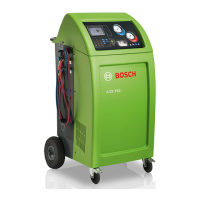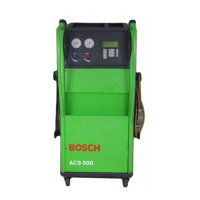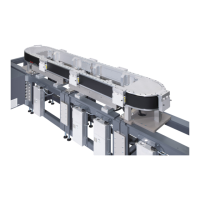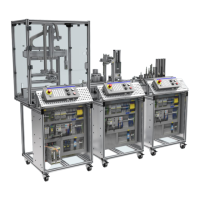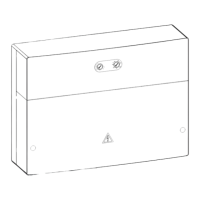ACS 653, ACS 663 Service Manual
SP00D00624 2021-04-08 Robert Bosch GmbH
48
Diagnostics and Testing
To provide proper protection and maximize
system reliability, it is important to consider
grounding, shielding, and AC and DC power
supply issues.
Grounding must be looked at rst, for without
a low-impedance ground; all noise protection
measures built into the electronic components
and assemblies are rendered useless.
Grounding equipment is done for two reasons.
The rst and most important is safety. To meet
safety requirements, any exposed conductive
surface of the equipment must be within the
safe touch-voltage range of under 30 Volts
. Any voltage greater may result in a life
threatening electrical shock, under the right
conditions.
The second reason is the process by which
the case and any extensions of the case are
connected to earth ground. If the ground is
open or has a high resistance, electrical noise
will not be shorted to ground and can radiate
into the unit.
Proper shielding prevents noise from entering
the unit. Two types of noise can affect the
operation of a unit; noise coming in on the AC
line and external noise (such as ignition noise)
radiated directly into the unit.
- any signal on the power line other
than the advertised voltage and frequency; this
includes spikes, surges, and sags.
- (such as ignition noise) is
generally radiated into the unit. Other types
of radiated noise sources are light ballasts,
transmitting towers, power lines, etc. External
noise can cause the unit to lock-up, reset, or
behave erratically. The eect varies with the
type and intensity of the noise.
The power applied to the unit must be from
a stable, low-impedance source. Long-term
stability must be within ±10% of the nominal
voltage. For a nominal 230 V line, the limits are
207 V to 253 V. The unit will operate above and
below the voltage limits. However, problems
in operation may appear if the voltage drops
(sags) below or rises above (surges) these
limits. The life expectancy of the components
in the unit may be shortened signicantly.
The impedance controls the ability of the line to
supply a constant voltage with a changing load.
Noting the line voltage with the unit o, then
noting the voltage with the unit on, a technician
can determine the impedance of the line from
the unit to the power transformer. If there is a
greater than 10% change, the line has too much
resistance or the load is too great. The solution
is a dedicated line.
The line cord must be wired correctly. When
replacing the line cord, make sure the terminals
at the plug have the high, neutral, and ground
connections in their proper location. A ground
circuit tester can be used to test wiring.
1. Ensure the outlet is in good working order.
2. With no load on the circuit, use a ground
circuit tester to verify proper polarity and
presence of earth ground.
3. Using a digital volt meter, with no load on
the circuit, verify there is less than 0.3 V
from neutral to ground and the voltage is
stable. Be suspicious of a 0 V reading. This
may indicate a short between neutral and
ground.
4. With no load on the circuit, verify the output
voltage is nominally 230 V and stable.
5. With the unit connected to the circuit
(loaded) verify the voltage varies less than
4 VAC measured from neutral to ground.
6. Using an oscilloscope, monitor the waveform
output from the outlet for any distortion.
The signal should be a sine wave.

